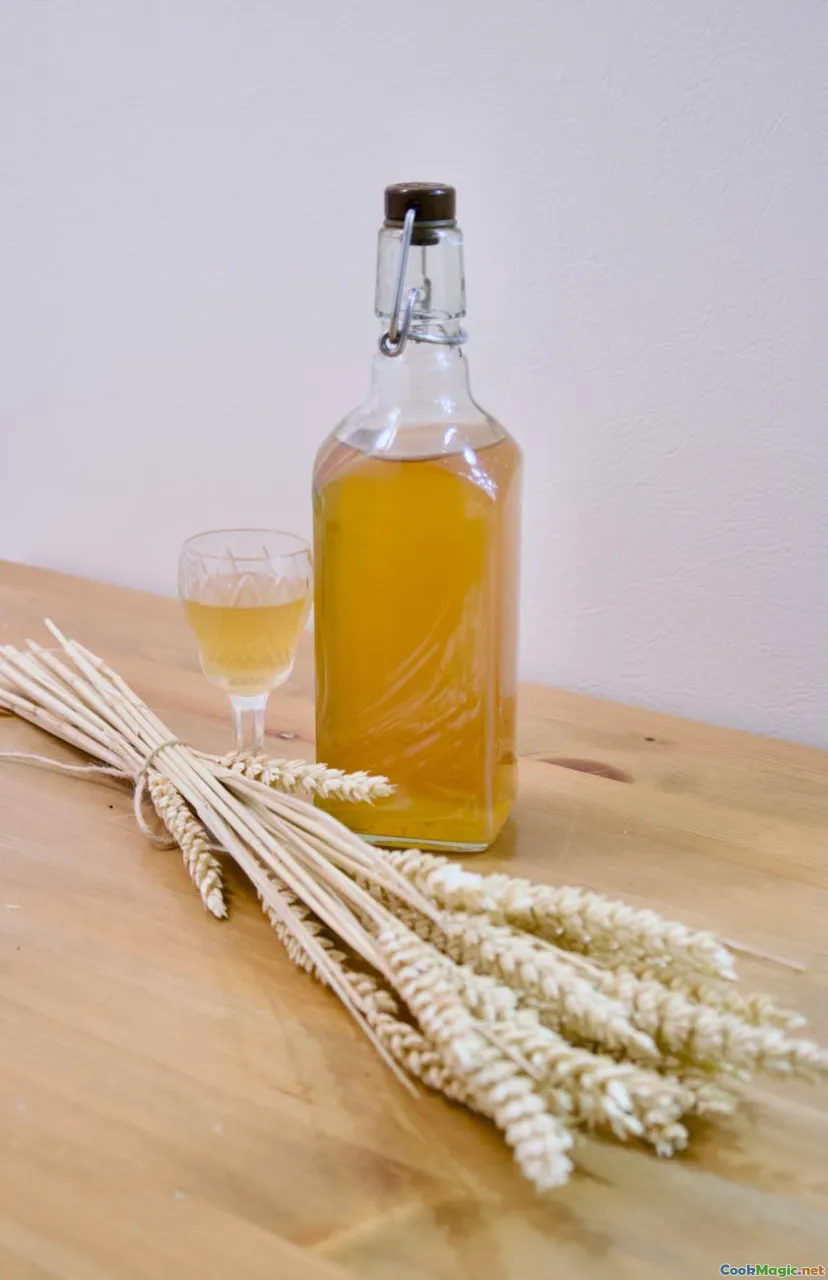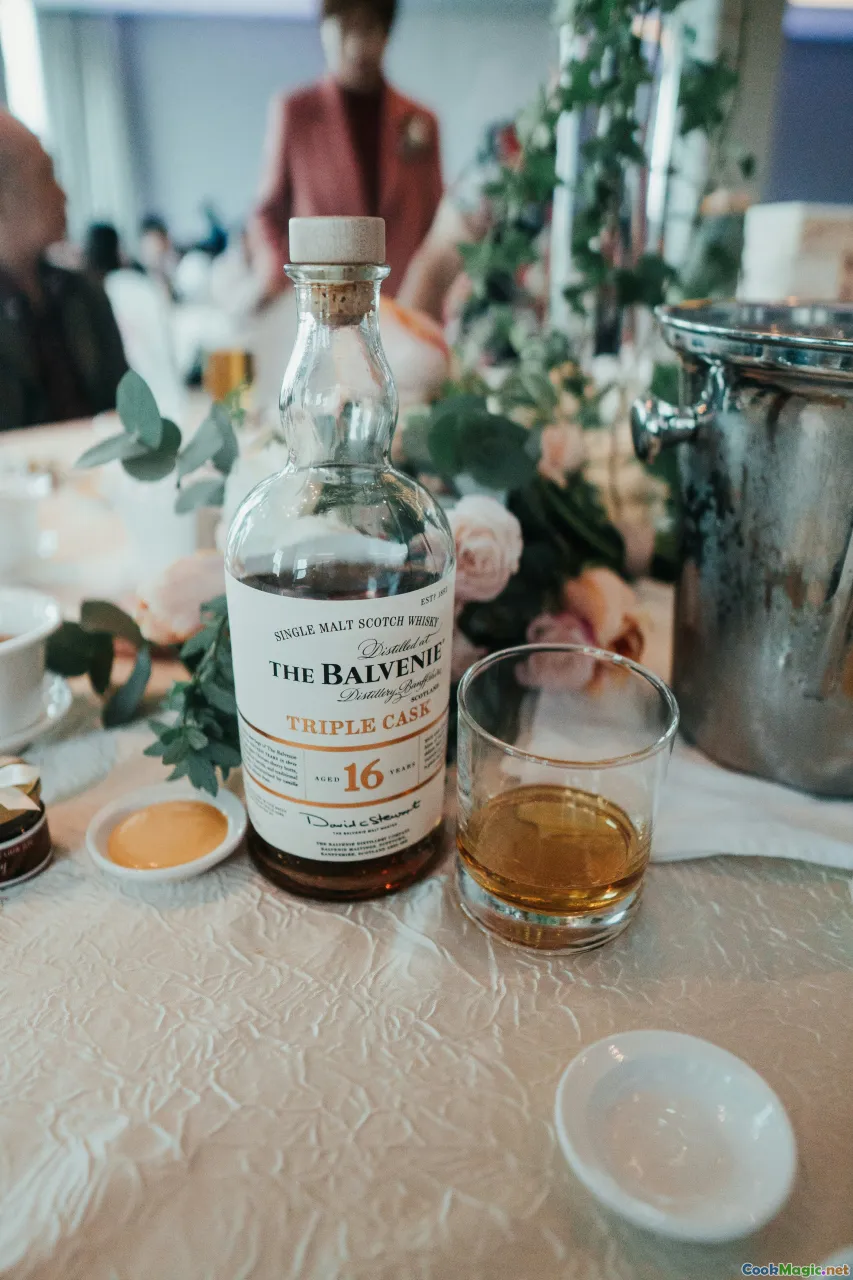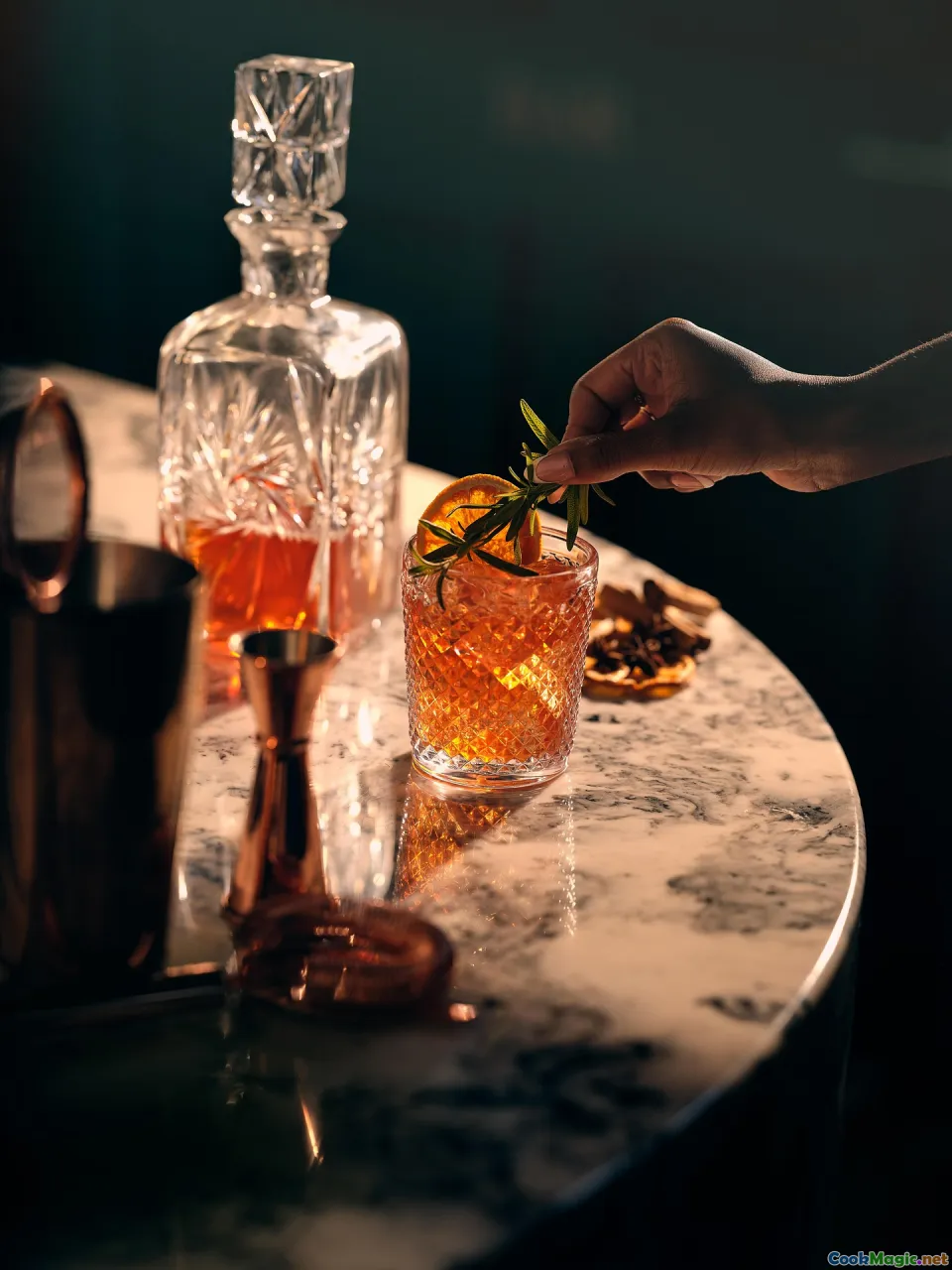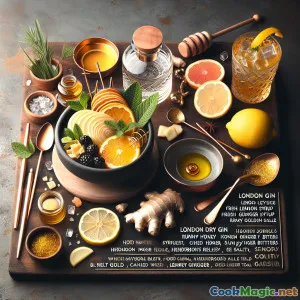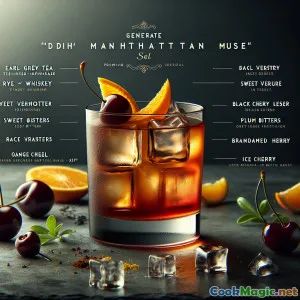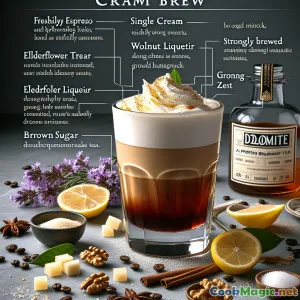
Golden Thatch Barleywine Cocktail
(0 Reviews)Ingredients
-
360 ml English barleywine ale
(Chilled but not ice-cold; choose a traditional English style (10–12% ABV).)
-
60 ml English single malt whisky
(Substitute with a malty Scotch if unavailable.)
-
2 tsp Orange marmalade
(Prefer thick-cut Seville marmalade for classic British bitterness.)
-
20 ml Heather honey syrup (1:1 honey:water)
(Gently warmed to dissolve; acacia or clover honey also works.)
-
4 dashes Aromatic bitters
(Angostura or equivalent to balance sweetness.)
-
2 dashes Orange bitters
(Accentuates marmalade; can omit if using very bitter marmalade.)
-
2 drops Saline solution (10%)
(Enhances malt and citrus; use a tiny amount.)
-
6 cubes Large clear ice cubes
(Large cubes reduce dilution while stirring.)
-
2 strips Orange Peel
(Expressed over the glass for aromatic oils.)
-
2 sprigs Fresh rosemary
(Lightly slapped; adds resinous aroma reminiscent of English hedgerows.)
(Chilled but not ice-cold; choose a traditional English style (10–12% ABV).)
(Substitute with a malty Scotch if unavailable.)
(Prefer thick-cut Seville marmalade for classic British bitterness.)
(Gently warmed to dissolve; acacia or clover honey also works.)
(Angostura or equivalent to balance sweetness.)
(Accentuates marmalade; can omit if using very bitter marmalade.)
(Enhances malt and citrus; use a tiny amount.)
(Large cubes reduce dilution while stirring.)
(Expressed over the glass for aromatic oils.)
(Lightly slapped; adds resinous aroma reminiscent of English hedgerows.)
Nutrition
- Servings: 2
- Serving Size: 1 snifter (180 ml)
- Calories: 240 kcal
- Carbohydrates: 0 g
- Protein: 1 g
- Fat: 0 g
- Fiber: 0 g
- Sugar: 12 g
- Sodium: 15 mg
- Cholesterol: 0 mg
- Calcium: 15 mg
- Iron: 0.3 mg
Instructions
-
1 - Chill and prep:
Chill two snifters. Cut two broad orange peels and gently slap the rosemary sprigs to release oils. Keep barleywine in the fridge—cool, not icy.
-
2 - Build marmalade base:
In a mixing glass, stir orange marmalade with honey syrup until glossy and mostly dissolved. Add aromatic and orange bitters; stir again to integrate.
-
3 - Add whisky and dilute:
Pour in the English whisky and add large ice cubes. Stir 20–25 seconds to chill and slightly dilute, forming a silky, emulsified base.
-
4 - Introduce barleywine gently:
Add the chilled barleywine to the mixing glass. Stir very briefly—about 5–8 seconds—to blend without knocking out carbonation.
-
5 - Finish and Garnish:
If using, add two drops of saline. Strain into the chilled snifters. Express orange peel over each glass and place as garnish; add rosemary sprig if desired.
-
6 - Serve:
Serve immediately while the head is delicate and aromas bloom. Sip slowly as a contemplative after-dinner drink.
Chill two snifters. Cut two broad orange peels and gently slap the rosemary sprigs to release oils. Keep barleywine in the fridge—cool, not icy.
In a mixing glass, stir orange marmalade with honey syrup until glossy and mostly dissolved. Add aromatic and orange bitters; stir again to integrate.
Pour in the English whisky and add large ice cubes. Stir 20–25 seconds to chill and slightly dilute, forming a silky, emulsified base.
Add the chilled barleywine to the mixing glass. Stir very briefly—about 5–8 seconds—to blend without knocking out carbonation.
If using, add two drops of saline. Strain into the chilled snifters. Express orange peel over each glass and place as garnish; add rosemary sprig if desired.
Serve immediately while the head is delicate and aromas bloom. Sip slowly as a contemplative after-dinner drink.
More About: Golden Thatch Barleywine Cocktail
Story and Inspiration
Golden Thatch Barleywine is a distinctly British beer cocktail, inspired by the warm glow of thatched roofs at sunset and the storied tradition of English barleywine. Rather than brewing the barleywine itself—an endeavor worthy of its own manual—this recipe celebrates a finished bottle of English-style barleywine by weaving it into a luxurious, after-dinner sipper. The driving idea is simple: take the malt depth, dried fruit notes, and oxidative elegance of barleywine and frame them with familiar English pantry flavors—Seville orange marmalade and heather honey—plus a touch of whisky to fortify and lengthen the finish.
Historically, barleywine emerged in England as a strong, cellarable ale, often brewed for winter or celebratory occasions. It carries layers of toffee, fig, date, treacle, and toasted biscuit. When paired with a measured dose of English single malt whisky and a spoon of bitter marmalade, those malt sugars find a citrusy counterpoint. The result is a drink that nods to classics like the Old Fashioned and the Boilermaker while standing firmly on its own as a refined, aromatic nightcap.
Flavor Profile
- Aroma: Orange oils, honeyed malt, hints of rosemary resin, and subtle spice from bitters.
- Palate: Rich caramel malt and dried fruits upfront; marmalade bitterness and citrus pith brighten the mid-palate; whisky adds grainy warmth; honey rounds and softens.
- Finish: Long, gently bitter, and warming, with a whisper of herbal pine from rosemary.
Technique Notes and Tips
- Temperature matters: Barleywine should be cool but not frigid (about 10–12°C). Too cold, and the nuanced malt complexity goes mute; too warm, and the alcohol dominates.
- Big ice, gentle stir: Large, clear cubes keep dilution controlled. When adding the barleywine, stir briefly to preserve carbonation; you want a soft effervescence, not a foamy head.
- Marmalade choice: Seek thick-cut Seville orange marmalade. Its balanced bitterness harmonizes with the hop bitterness of traditional English barleywines, preventing a cloying profile.
- Honey syrup: A 1:1 honey syrup integrates more smoothly than raw honey, which can seize in cold liquids. Heather honey adds floral, woody tones; acacia produces a lighter, cleaner profile.
- Saline finesse: Two drops of 10% saline might seem trivial, but salt subtly amplifies malt and citrus while curbing bitterness. Don’t overdo it—restraint is key.
- Whisky selection: An English single malt with biscuit and orchard notes complements the malt; a Speyside Scotch with apple, vanilla, and honey also works beautifully.
Variations
- Tawny Port Accent: Replace half the whisky with tawny port for a rounder, nutty sweetness and an amber hue.
- Smoke and Thatch: Swap in a gentle, coastal Scotch for a whisper of smoke that echoes toasted malt.
- Orchard Twist: Add a barspoon of apple brandy and a dash of Peychaud’s bitters for red-fruit lift.
- No-Booze Inspiration: For a non-alcoholic riff, use a malt-forward N/A barley-style brew, a touch of black tea concentrate for tannic structure, honey syrup, marmalade, and bitters-free citrus tincture; garnish as directed.
Pairings
- Stilton or mature Cheddar: The salty, crumbly, and umami-rich profile softens the alcohol and highlights caramelized malt.
- Treacle tart or sticky toffee pudding: Sweetness mirrors malt while citrus cut maintains balance.
- Roast nuts and dried figs: Simple, textural, and seamlessly aligned with the drink’s dried-fruit notes.
Make-Ahead and Scaling
- Pre-batch the marmalade-honey-bitter base for service: For four servings, stir together 4 tsp marmalade, 40 ml honey syrup, and 8 dashes bitters. Keep chilled up to 24 hours. Add whisky and barleywine à la minute.
- If batching larger quantities, gently roll the mixture in a chilled pitcher instead of stirring to protect carbonation.
Why It’s Unique
This cocktail respects the heritage of English barleywine without overshadowing it. The marmalade does what sugar cannot: it contributes texture, fruit pectin silkiness, and a sophisticated bitterness. Honey syrup adds a pastoral English character while smoothing edges. Whisky functions not as a blunt fortifier but as a grain-to-grain bridge, extending barleywine’s malt narrative. The rosemary garnish is more than decoration; it nods to hedgerows and countryside breezes, bringing a natural resin that plays beautifully with orange oils and hop spice.
Final Thoughts
Golden Thatch Barleywine is designed for low-light moments and slow conversation. It’s the kind of drink that asks you to linger—letting the orange oils evolve, the honey glow broaden, and the malt unfold in chapters. Whether you enjoy it after a Sunday roast or as a fireside companion, it delivers a distinctly British sense of place in a single, radiant glass.

